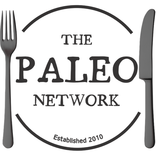Recipe: Slow Cooked Memphis Style Baby Back Ribs
If there’s one thing I've learnt from the humble pork rib, it’s that patience is indeed a virtue; the slower they are cooked, the better. That being said, I've never had the patience (or the self control, for that matter) to cook my ribs for any longer than 3 hours. Today I decided to put my willpower (and science) to the test, in the quest for ultra tender, Elvis-would-be-proud baby back ribs. I marinated them overnight, then roasted them for five and a half hours at 120 C. The results? Well, if you can wait as long as I did then you’ll find out for yourself.
As for the marinade, I came up with a rich, smoky, Southern Tennessee inspired glaze which is everything you want when you bite into a thick, juicy pork rib. Make sure you have your napkins at the ready.
Back Ribs Ingredients:
- 1 kg Baby Back Pork Ribs
- 4 tbsp tomato puree
- 1 tbsp chipotle chilli paste
- 4 tbsp maple syrup
- 2 cloves garlic, crushed
- 6 tbsp red wine vinegar
- 2 tbsp olive oil
- 2 tsp smoked paprika
- 1 tsp Chinese five spice
Back Ribs How To:
Mix together all of the marinade ingredients in a bowl, then add the ribs. Coat them well all over, then leave to marinade overnight in the fridge.
The next day, preheat the oven to 120C / 250F / Gas Mark ½. Remove the ribs from the fridge and transfer to a shallow roasting dish.
Add around 200ml water to the dish, taking care not to pour it onto the ribs. The liquid should reach around half way up the ribs. Cover with foil, then leave to roast in the oven for 5 ½ hours. Come back to check and turn them a few times during this process.
When they are done, remove from the oven then immediately turn the heat to full (mine was 240C). When fully heated, sprinkle the ribs with a generous amount of sea salt and return to the oven, uncovered, for a final 10 minutes. Leave to cool for 5 minutes before serving. Give yourself a pat on the back for making it this far, then tuck in!























